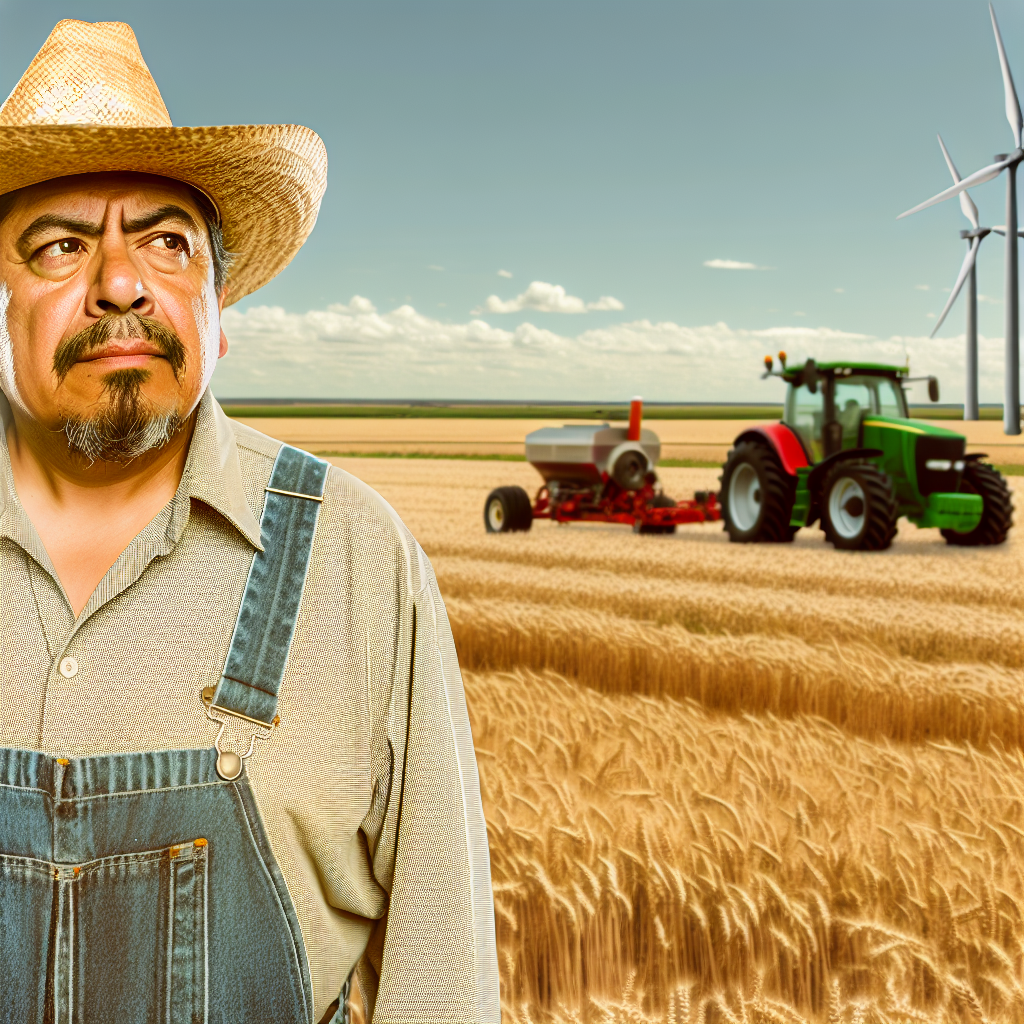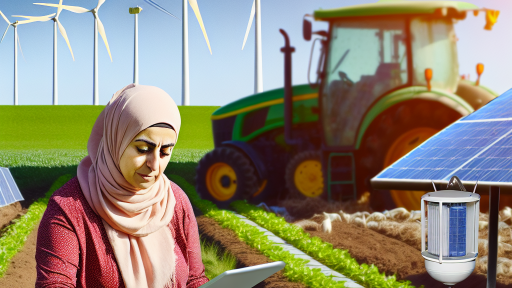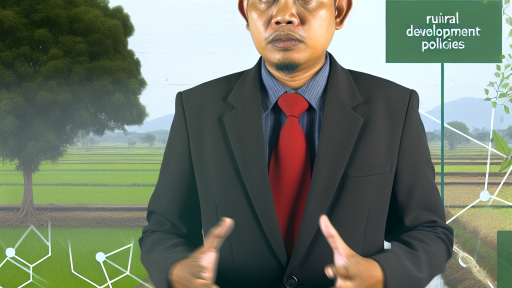Impact of Climate Change on Agriculture
Current Challenges
Climate change poses significant challenges to agriculture worldwide.
Rising temperatures affect crop yield and quality directly.
Climate variability leads to unpredictable weather patterns.
Farmers face increased pest and disease pressure as ecosystems shift.
Water scarcity has become a pressing issue in many regions.
Consequently, droughts and floods disrupt farming activities.
Farmers must adapt to these challenges quickly and effectively.
Future Threats
The future landscape of agriculture is uncertain due to climate change.
Projections suggest that extreme weather events will increase in frequency.
This escalation threatens food security globally.
Potential shifts in crop viability will influence agricultural practices.
Additionally, rising sea levels can diminish arable land significantly.
New agricultural pests and pathogens may emerge, complicating farming efforts.
Farmers will need to innovate to sustain productivity amid these threats.
Potential Adaptation Strategies
Farmers are exploring various adaptation strategies to tackle these challenges.
Transform Your Agribusiness
Unlock your farm's potential with expert advice tailored to your needs. Get actionable steps that drive real results.
Get StartedCrop diversification can enhance resilience against climate fluctuations.
Utilizing drought-resistant crop varieties can mitigate water stress.
Implementing better water management practices is essential for sustainability.
Soil health improvements can boost crop resilience in changing climates.
Adopting sustainable farming practices promotes long-term viability.
Collaboration among farmers, researchers, and policymakers is crucial.
Overview of Recent Climate Change Legislation Affecting Farming Practices
Introduction to Climate Change Legislation
Climate change legislation has gained significant attention in recent years.
Governments worldwide are taking action to mitigate climate impacts.
This action directly affects farming practices and policies.
Key Legislative Changes
Several landmark bills have recently emerged in various countries.
The Green New Deal in the U.S. aims for sustainable agriculture.
In the EU, the Farm to Fork Strategy promotes environmental responsibility.
These legislative frameworks encourage farmers to adopt greener practices.
Incentives for Sustainable Practices
Many laws now provide financial incentives for farmers.
These incentives support the transition to organic farming methods.
For instance, subsidies for cover cropping have increased significantly.
Such programs foster soil health and biodiversity in farming.
Requirements for Carbon Footprint Reduction
Many countries are imposing stricter regulations to minimize carbon emissions.
Farmers now must track and report their greenhouse gas emissions.
Compliance with these regulations is essential for accessing certain funds.
Additionally, adopting practices like agroforestry can be beneficial.
Impact on Crop Selection and Livestock Management
Legislation influences what crops farmers choose to plant.
Farmers are encouraged to select drought-resistant plant varieties.
This approach helps adapt to changing climate conditions.
Showcase Your Farming Business
Publish your professional farming services profile on our blog for a one-time fee of $200 and reach a dedicated audience of farmers and agribusiness owners.
Publish Your ProfileMoreover, livestock management practices are evolving.
Farmers are increasingly focusing on sustainable feed options.
Challenges in Implementation
Despite the positive intentions, challenges remain in implementation.
Many farmers struggle with the costs of transition.
Additionally, lack of access to information can hinder progress.
Support networks and educational programs can help mitigate these challenges.
Technological Innovations in Agriculture
Overview of Current Innovations
Modern farming increasingly relies on technology.
Farmers now use drones for crop monitoring.
Moreover, sensors help track soil health effectively.
These tools enable precision agriculture.
Consequently, farmers optimize resources and reduce waste.
Regulatory Impact on Agricultural Technology
Climate change legislation influences farming practices significantly.
As regulations tighten, farmers must adapt quickly.
New technologies align with sustainability goals.
Thus, innovation becomes crucial for compliance.
Adapting to Environmental Regulations
Farmers utilize advanced data analytics for better decision-making.
These systems analyze weather patterns and crop performance.
Additionally, sustainable practices are now prioritized.
Agricultural enterprises are embracing renewable energy sources.
For example, solar technology powers many irrigation systems.
Future Trends in Agricultural Technology
Future farming will likely see more automation.
Robotic systems will assist with planting and harvesting.
Furthermore, vertical farming will gain popularity.
This method maximizes land use in urban areas.
As such, it meets growing food demands responsibly.
Case Studies of Successful Adaptations
Innovative farms demonstrate successful technology integration.
For instance, GreenField Farms uses AI-driven analysis.
This has improved their yield by 20% over three years.
Similarly, EcoAgri adapts hydroponics for efficient food production.
These examples illustrate the potential of modern farming technologies.
Uncover the Details: How Agricultural Insurance Protects Against Natural Disasters
Sustainable Farming Practices
Balancing Productivity and Environmental Responsibility
Sustainable farming practices focus on achieving a balance between productivity and environmental stewardship.
Farmers must adapt their methods to meet both current and future food demands.
Improving soil health plays a crucial role in sustainable agriculture.
Methods like crop rotation and cover cropping boost soil fertility and structure.
Additionally, these practices reduce soil erosion and enhance water retention.
Integrating agroforestry can also provide significant benefits to farms.
It combines agricultural crops with tree planting.
This method increases biodiversity and enables better pest control.
Moreover, it creates a sustainable source of timber and fuel.
Showcase Your Farming Business
Publish your professional farming services profile on our blog for a one-time fee of $200 and reach a dedicated audience of farmers and agribusiness owners.
Publish Your ProfileUsing organic farming techniques further benefits environmental health.
Organic farmers avoid synthetic fertilizers and pesticides.
Instead, they utilize natural alternatives and crop diversity.
This approach not only preserves ecosystem services but also suits consumer trends.
Consumers increasingly demand sustainable products from responsible sources.
Therefore, improving market access can enhance profitability for sustainable farms.
Connecting with local markets and consumers promotes community engagement.
This engagement enhances the value of local produce while reducing carbon footprints.
Moreover, employing technology can help optimize farming practices.
Innovative solutions include precision agriculture and data analytics.
These technologies allow farmers to monitor resources efficiently.
They can apply inputs like water and fertilizers only where necessary.
Ultimately, sustainable farming practices drive long-term resilience.
This resilience benefits both farmers and the environment during climate change adaptations.
Find Out More: Maximizing Renewable Energy Incentives for Modern Farms
Economic Implications of Climate Change Legislation on Farming Sectors
Overview of Climate Change Legislation
Climate change legislation aims to mitigate environmental impacts.
It focuses on reducing greenhouse gas emissions across various sectors.
The farming industry faces significant adjustments under these regulations.
Direct Financial Effects on Farmers
Farmers will experience both costs and benefits due to new laws.
Investments in sustainable practices may increase initial expenditures.
However, long-term savings can offset these initial costs.
Incentives for Sustainable Practices
Many governments provide incentives for adopting green technologies.
Subsidies may help farmers transition to more sustainable practices.
These financial aids encourage investments in renewable energy sources.
Impact on Crop Yields and Livelihoods
Changing climate conditions can alter crop yields significantly.
Farmers may face challenges due to unpredictable weather patterns.
These changes can threaten their livelihoods and food security.
Market Dynamics and Pricing
Legislation may create shifts in supply and demand dynamics.
As sustainable products become more popular, prices could stabilize.
This might provide farmers with new revenue opportunities.
Support from Agricultural Organizations
Various agricultural organizations are adapting to these changes.
They offer resources and guidance to farmers navigating legislation.
Cooperatives and networks help share knowledge and best practices.
Global Competition and Trade
Climate change legislation can affect global agricultural markets.
Farmers may need to compete with international producers.
Trade agreements may need to adapt to these new economic environments.
Future Outlook for Farming Industries
The farming industry must innovate to thrive under new laws.
Investment in research and development is crucial for adaptation.
Additionally, collaboration between stakeholders will drive progress.
Uncover the Details: Understanding Government Conservation Incentives For Farmers
Showcase Your Farming Business
Publish your professional farming services profile on our blog for a one-time fee of $200 and reach a dedicated audience of farmers and agribusiness owners.
Publish Your Profile
Case Studies: Successful Adaptation Strategies from Farmers Around the World
Innovative Water Management in Australia
Farmers in Australia have embraced innovative water conservation techniques.
Many now use drip irrigation instead of traditional methods.
This significantly reduces water wastage and maximizes efficiency.
Additionally, they have implemented rainwater harvesting systems.
These systems capture and store rainwater for future use.
As a result, farmers report improved crop yields even in drought conditions.
Diverse Crop Rotation in Brazil
In Brazil, farmers practice diverse crop rotation to enhance soil health.
This method includes alternating between soybeans, corn, and legumes.
Such rotation helps prevent soil depletion and pest infestations.
Farmers also report increased resilience against extreme weather conditions.
Consequently, this strategy boosts overall farm productivity.
Agroforestry Systems in Africa
Africa has seen successful implementation of agroforestry systems.
Farmers integrate trees and shrubs into their crop production systems.
This practice improves biodiversity and soil structure.
Moreover, it provides additional resources, such as timber and fruits.
Farmers benefit from reduced erosion and enhanced moisture retention.
Overall, agroforestry systems offer sustainable solutions to climate challenges.
Precision Agriculture in the United States
Precision agriculture is transforming farming practices across the United States.
Farmers utilize advanced technologies like GPS and drones.
This allows for precise monitoring of crops and soil conditions.
They can apply fertilizers and pesticides more efficiently.
As a result, these practices lead to reduced environmental impact.
Furthermore, farmers enjoy increased yields and lower costs.
Community-Led Initiatives in Europe
In Europe, community-led initiatives promote sustainable farming practices.
Local farmers collaborate on shared resources and knowledge exchange.
This fosters a sense of solidarity and mutual support.
Such initiatives often focus on organic farming and local markets.
Consequently, they enhance food security and local economies.
These practices also encourage biodiversity conservation within the region.
Uncover the Details: Climate-Smart Agriculture Conservation Initiatives
Policy Recommendations for Effective Integration of Climate Change Measures in Agriculture
Creating Comprehensive Climate Policies
Governments must develop comprehensive climate policies tailored for agriculture.
Such policies should focus on both mitigation and adaptation strategies.
Additionally, these policies should involve input from various stakeholders.
This includes farmers, scientists, and local communities.
Promoting Sustainable Agricultural Practices
Implementing sustainable agricultural practices is essential for resilience.
These practices can include crop rotation and cover cropping.
Moreover, agroforestry systems can enhance biodiversity while sequestering carbon.
Educating farmers on these methods will improve adoption rates.
Investing in Research and Development
Investment in agricultural research and development is critical.
Governments should fund projects focusing on climate-resilient crops.
Showcase Your Farming Business
Publish your professional farming services profile on our blog for a one-time fee of $200 and reach a dedicated audience of farmers and agribusiness owners.
Publish Your ProfileAdditionally, research on efficient water use and soil health is vital.
Private sector partnerships can also drive innovation in this field.
Enhancing Financial Support for Farmers
Financial support for farmers will encourage the adoption of green practices.
Subsidies and grants can help cover the costs of sustainable equipment.
Access to low-interest loans can also facilitate necessary investments.
Insurance programs should protect farmers from climate-induced losses.
Implementing Education and Training Programs
Education and training programs should reach farmers at all levels.
Workshops can provide hands-on experience with new practices.
Moreover, online resources can offer ongoing support and information.
Collaboration with agricultural extension services is key for success.
Strengthening Local Food Systems
Strengthening local food systems is another effective strategy.
This can reduce transportation emissions and promote community resilience.
Encouraging direct-to-consumer sales can enhance local economies.
Additionally, community-supported agriculture (CSA) models should be promoted.
Monitoring and Reporting Progress
Establishing monitoring and reporting mechanisms is essential.
Data collection can reveal the effectiveness of climate policies.
Transparency in reporting ensures accountability among stakeholders.
Regular assessments can guide necessary policy adjustments.
Future Outlook
Shaping the Next Generation of Farmers
Climate change legislation is transforming agriculture worldwide.
These regulations encourage innovative practices among farmers.
New policies will guide investment in sustainable farming methods.
As a result, farmers will adopt technologies that reduce emissions.
Emphasis on Sustainable Practices
Farmers will increasingly focus on sustainable farming practices.
Crop rotation and cover cropping will become standard strategies.
This shift will improve soil health and biodiversity.
Additionally, it will help manage water resources more efficiently.
Adoption of Advanced Technologies
Technology will play a crucial role in future farming.
Farmers will utilize precision agriculture to optimize yields.
This includes the use of drones and IoT devices.
These technologies enable real-time monitoring of crops.
Support for Young Farmers
Legislation will also focus on supporting young farmers.
Programs will offer grants and loans for new agricultural businesses.
This assistance will encourage innovation and entrepreneurship.
Economic Implications
Climate change laws will reshape agricultural economics.
Farmers will invest in renewable energy sources.
This transition can reduce operational costs in the long run.
Furthermore, eco-friendly practices can open new market opportunities.
Challenges Ahead
Despite the benefits, challenges remain for farmers.
Meeting stringent regulatory standards will require time and resources.
Farmers may struggle with the costs of transitioning to new methods.
Showcase Your Farming Business
Publish your professional farming services profile on our blog for a one-time fee of $200 and reach a dedicated audience of farmers and agribusiness owners.
Publish Your ProfileCollaboration and support will be essential for overcoming these hurdles.




